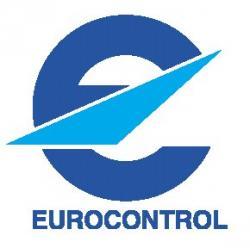Mon, Oct 21, 2013
EUROCONTROL Going Slower On UAS Integration Than FAA
Aviation officials in Europe do not seem to have the enthusiasm for the integration of UAVs into European airspace that their counterparts in the United States are showing. Among the issues discussed at AUVSI’s Unmanned Systems Europe last week was a pragmatic approach to unmanned aircraft integration in Europe, including the path forward from a regulatory and public perception perspective.

Frank Brenner, director general of EUROCONTROL, likened fitting unmanned aircraft into an already busy European airspace to putting together a jigsaw puzzle. “I’m not saying all of this to depress you,” he said. “ … And I’m not trying to claim it’s all too difficult either. … I think you are all here in the right business at the right moment in time, because it’s a big business ahead.”
According to a recap of the conference posted on the AUVSI website, Brenner said the timeline for integration was tight and a holistic approach will be key to getting it right. The second part of this conundrum is public perception, he said, despite unmanned aircraft’s many uses outside of the military. “I doubt whether the public would pick up on these applications if you walked out of the hotel and onto the street,” he said.
Brenner added that politicians are often swayed by public perception, noting how the German public has seen the death of the Euro Hawk program because “a politician wasn’t able to answer questions.” And Brenner said politicians often walk away from an issue when they feel they cannot win the argument.
Peter Lee, a commercial and technology lawyer for Taylor Vinters LLP, said that because unmanned aircraft can be used in so many different ways, they are at higher risk for attracting bad publicity. “The next time we get a topless picture of Kate Middleton and it was taken by an unmanned platform, then that will do nothing to help our cause and perception in this area,” he said.

In an afternoon panel on public perception held the second day of the conference, Michael Standar, chief of strategies and external relations for the SESAR Joint Undertaking, said if the industry treats air traffic management as a straining factor, then public perception issues will follow, and the longer the industry waits to integrate, the worse it will get. He also said Europe doesn’t have the appetite for test sites, the way the U.S. Federal Aviation Administration has fashioned the next step of integration. He said that avoids the issue of using desegregated airspace. He added there will be nine offers signed within the next few weeks in Europe for areas for blended manned and unmanned airspace flights.
Chris Day, head of capability engineering at Schiebel who was formerly in the regulatory business, said he’s less convinced today that standards won’t impose added cost for industry, a huge concern for him.
“It’s all about numbers. Unless you can make the numbers work there won’t be an industry. Simple as that,” he said.
More News
Also: Kodiak 100 Joins USFS, Innovative Solutions & Support Renamed, Gulfstream Selects Honeywell, Special Olympics Airlift The Phantom 3500 mockup made an appearance where the>[...]
Also: USAF Pilots, Atlanta Tower Evac, Archer Spotlight Dissipates, Hop-A-Jet Sues A social-media call for people to point lasers at aircraft flying over Portland’s ICE facil>[...]
“We developed this prototype from concept to reality in under a year. The U-Hawk continues the Black Hawk legacy of being the world’s premier utility aircraft and opens>[...]
Flameout Pattern An approach normally conducted by a single-engine military aircraft experiencing loss or anticipating loss of engine power or control. The standard overhead approa>[...]
Student Pilot’s Failure To Maintain Airspeed And Altitude Resulting In A Collision With The Ground During The Base To Final Turn Analysis: The solo student pilot reported she>[...]
 Airborne 10.15.25: Phantom 3500 Confounds, Citation CJ3 Gen2 TC, True Blue Power
Airborne 10.15.25: Phantom 3500 Confounds, Citation CJ3 Gen2 TC, True Blue Power Airborne 10.14.25: Laser Threat, VeriJet BK, Duffy Threatens Problem Controllers
Airborne 10.14.25: Laser Threat, VeriJet BK, Duffy Threatens Problem Controllers Aero-News: Quote of the Day (10.20.25)
Aero-News: Quote of the Day (10.20.25) ANN's Daily Aero-Term (10.20.25): Flameout Pattern
ANN's Daily Aero-Term (10.20.25): Flameout Pattern NTSB Final Report: Schweizer SGS 2-33A
NTSB Final Report: Schweizer SGS 2-33A




